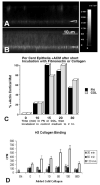Embryonic chick corneal epithelium: a model system for exploring cell-matrix interactions
- PMID: 18697222
- PMCID: PMC2754064
- DOI: 10.1002/dvdy.21637
Embryonic chick corneal epithelium: a model system for exploring cell-matrix interactions
Abstract
In her initial research, Elizabeth D. Hay studied amphibian limb regeneration, but later switched her focus, and for the remainder of her career addressed the role of the extracellular matrix (ECM) in regulating embryonic morphogenesis. Much of that work used the embryonic chick corneal epithelial model. This review highlights many of the discoveries that she made using this model. Hay was the first to show that embryonic corneal epithelial cells produce fibrillar collagen. Her lab was among the first to demonstrate that corneal epithelial cells respond to a collagenous substrate by increasing ECM production, and that purified ECM molecules, added to cultures of epithelial sheets, induce a reorganization of the actin cytoskeleton. These data led to the first theories of cell-matrix interactions, illustrated in a 'hands across the membrane' sketch drawn by Hay. Recent work with the epithelial sheet model system has elucidated many of the signal transduction pathways required for actin reorganization in response to the ECM. In all, this body of work has amply supported Hay's belief that the embryonic corneal epithelium is a powerful model system for exploring the role of the ECM in regulating the cytoskeleton, in directing cell migration, and in profoundly influencing cell growth and differentiation during development.
Copyright (c) 2008 Wiley-Liss, Inc.
Figures





Similar articles
-
ROCK inhibitor (Y27632) increases apoptosis and disrupts the actin cortical mat in embryonic avian corneal epithelium.Dev Dyn. 2004 Mar;229(3):579-90. doi: 10.1002/dvdy.20008. Dev Dyn. 2004. PMID: 14991713 Free PMC article.
-
Erk and PI-3 kinase are necessary for collagen binding and actin reorganization in corneal epithelia.Invest Ophthalmol Vis Sci. 2000 Oct;41(11):3374-82. Invest Ophthalmol Vis Sci. 2000. PMID: 11006227 Free PMC article.
-
ECM-stimulated signaling and actin reorganization in embryonic corneal epithelia are Rho dependent.Invest Ophthalmol Vis Sci. 2002 Oct;43(10):3181-9. Invest Ophthalmol Vis Sci. 2002. PMID: 12356822 Free PMC article.
-
Matrix-cytoskeletal interactions in the developing eye.J Cell Biochem. 1985;27(2):143-56. doi: 10.1002/jcb.240270208. J Cell Biochem. 1985. PMID: 3886675 Review.
-
Epithelial repair: roles of extracellular matrix.Cornea. 2002 Mar;21(2 Suppl 1):S23-9. doi: 10.1097/00003226-200203001-00006. Cornea. 2002. PMID: 11995806 Review.
Cited by
-
Extracellular matrix fluctuations during early embryogenesis.Phys Biol. 2011 Aug;8(4):045006. doi: 10.1088/1478-3975/8/4/045006. Epub 2011 Jul 12. Phys Biol. 2011. PMID: 21750366 Free PMC article.
-
The avian embryo as a time-honoured animal model in developmental, biomedical and agricultural research.Philos Trans R Soc Lond B Biol Sci. 2025 Feb 27;380(1920):20230438. doi: 10.1098/rstb.2023.0438. Epub 2025 Feb 27. Philos Trans R Soc Lond B Biol Sci. 2025. PMID: 40010394 Review.
-
Contact-mediated control of radial migration of corneal epithelial cells.Mol Vis. 2016 Aug 9;22:990-1004. eCollection 2016. Mol Vis. 2016. PMID: 27563231 Free PMC article.
-
Effects of sizes and conformations of fish-scale collagen peptides on facial skin qualities and transdermal penetration efficiency.J Biomed Biotechnol. 2010;2010:757301. doi: 10.1155/2010/757301. Epub 2010 Jun 8. J Biomed Biotechnol. 2010. PMID: 20625414 Free PMC article. Clinical Trial.
-
Use of the antimicrobial peptide pardaxin (GE33) to protect against methicillin-resistant Staphylococcus aureus infection in mice with skin injuries.Antimicrob Agents Chemother. 2014;58(3):1538-45. doi: 10.1128/AAC.02427-13. Epub 2013 Dec 23. Antimicrob Agents Chemother. 2014. Retraction in: Antimicrob Agents Chemother. 2020 May 21;64(6):e00484-20. doi: 10.1128/AAC.00484-20. PMID: 24366739 Free PMC article. Retracted.
References
-
- Ali IU, Hynes RO, Ali IU, Hynes RO. Effects of LETS glycoprotein on cell motility. Cell. 1978;14:439–446. - PubMed
-
- Bernfield MR. Collagen synthesis during epitheliomesenchymal interactions. Dev Biol. 1970;22:213–231. - PubMed
-
- Coulombre AJ, Coulmbre JL. Corneal development. II. Transparency changes during rapid hydration. Am J Ophthalmol. 1958;46:276–280. discussion 281. - PubMed
-
- Dodson JW. The differentiation of epidermis. I. The interrelationship of epidermis and dermis on embryonic chicken skin. J Embryol Exp Morphol. 1967;17:83–105. - PubMed
Publication types
MeSH terms
Substances
Grants and funding
LinkOut - more resources
Full Text Sources
Other Literature Sources
Miscellaneous

